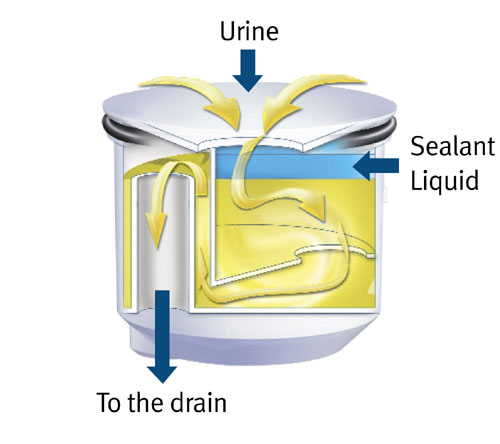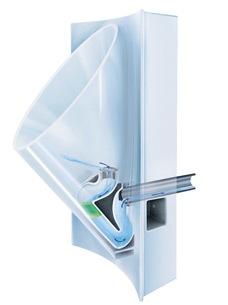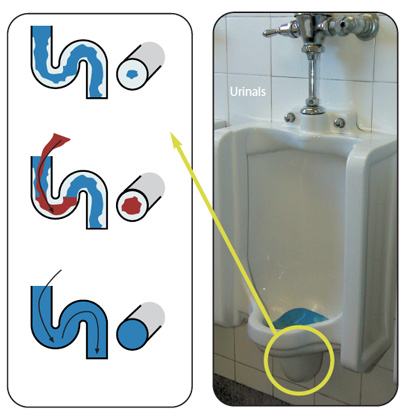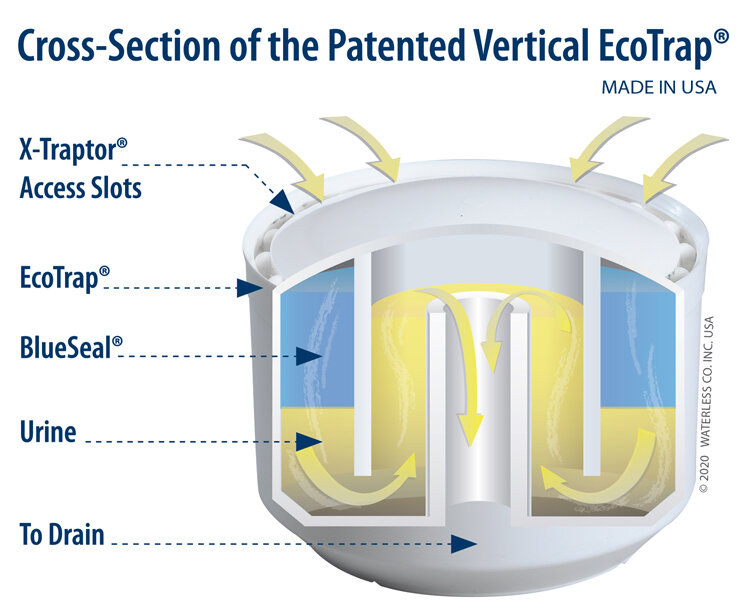Urinals work by directing liquid waste into a drainage system. They are designed to be efficient and hygienic.
Understanding how urinals function can seem complex, but it’s surprisingly simple. The system is built to minimize splash and odors, using a flush mechanism that cleans the surface. Common in public spaces, they save water and space. Urinals come in various designs, each with unique features.
Some use sensors to flush automatically, while others have manual controls. The main goal is easy maintenance and sanitation. Knowing how urinals work helps appreciate their role in public hygiene. Dive deeper into this topic to understand the technology behind these everyday fixtures. Learn what makes them effective and how they contribute to cleanliness in shared bathrooms.
Urinal History
The first urinals appeared in ancient Rome. They were basic and made of stone. Romans used them in public baths. Urinals evolved over time. In the 19th century, porcelain became popular. This made urinals easy to clean. Modern designs began in the 20th century. These designs improved privacy and hygiene. Some urinals even save water now. They use smart technology. This helps the environment.
Urinals help keep public places clean. They save water compared to toilets. This is important for cities. Less water means lower costs. Urinals also reduce waiting lines. This is helpful in busy places. Airports and stadiums use them. They can handle many people fast. Urinals have a special role in modern sanitation. They make life easier and cleaner for everyone.

Credit: sustainablerestroomproducts.com
Basic Design Principles
Urinals use gravity to move water and waste. Water flows down from a tank or pipes. It goes into the urinal bowl. The bowl is sloped. This helps water and waste move out. Gravity pulls everything down. It goes into the plumbing system. This is a simple and effective way to keep the urinal clean. Gravity-based flow means no need for extra pumps. It’s quiet and saves energy.
Urinals are made from strong materials. Common choices include porcelain and stainless steel. These materials are tough. They resist stains and scratches. Porcelain is shiny and smooth. It is easy to clean. Stainless steel is durable. It lasts a long time. Both materials help keep germs away. They are safe for public use. Choosing the right material is key. It makes urinals last longer.
Waterless Urinals
Waterless urinals use no water. They have a special trap or seal. This trap stops smells from escaping. It lets urine flow to the drain. The trap often has a liquid sealant. This sealant is lighter than urine. It stays on top and blocks odors.
Waterless urinals save a lot of water. They are good for the environment. They also reduce water bills. Fewer flushes mean less maintenance. This makes them cost-effective over time.
Waterless urinals help the planet. They cut down on water use. This is great for places with little water. Less water use means saving more energy. This helps reduce pollution. Using them can make a big difference. Every drop saved helps the earth.
Flush Mechanisms
Urinals use different flush systems. Manual flush involves pressing a button or handle. This makes water flush through the urinal. It is simple and easy to use. Automatic flush uses sensors. Sensors detect when someone finishes using the urinal. They start the flush without needing to touch anything. This system is cleaner. It helps avoid spreading germs. Both systems have benefits. Manual is less expensive. Automatic is more hygienic.
Saving water is important. Urinals use techniques to save water. Some urinals use less water per flush. Low-flow systems are popular. They use minimal water. Some urinals use waterless systems. These systems do not need any water. They use special filters. Filters keep odors away. These methods help conserve water. They are eco-friendly. Saving water helps the environment.
Odor Control Techniques
Urinals can smell bad. Chemical solutions help stop this. They use special cleaning agents. These agents fight bad smells. They break down smelly parts. Enzyme cleaners are common. They eat up bad stuff. This keeps smells away. Some chemicals form a layer. This layer traps odors inside. It stops them from spreading. Deodorizers add nice smells. This makes the air fresh. It’s like magic!
Ventilation is key for fresh air. It pushes out bad smells. Fans help a lot. They move air around. Fresh air comes in. Smelly air goes out. Windows can also help. Open windows let fresh air in. Closed spaces trap smells. That’s why air movement is important. It keeps the bathroom fresh. Everyone likes a clean-smelling bathroom!
Installation Considerations
Urinals need proper plumbing to work well. They need a water supply and a drainage system. Water helps to flush waste away. The drainage system carries the waste to the sewer. Pipes must be the right size to prevent clogs. Install pipes with care to avoid leaks.
Urinals take up less space than toilets. This makes them good for small bathrooms. Ensure there is enough space for people to use them. People should have easy access to urinals. Make sure they are not too high or too low. Proper height makes them comfortable for everyone.
Maintenance Practices
Urinals operate by using water to flush waste into plumbing systems. Proper maintenance ensures efficient water flow and cleanliness. Regular cleaning prevents odors and blockages, enhancing hygiene and functionality.
Cleaning Protocols
Urinals need good cleaning to work well. Daily cleaning is best. Use the right cleaner to remove stains and odors. Scrubbing helps get rid of germs. Rinse with water to keep it fresh. Clean all parts, like the bowl and flush handle. This keeps the urinal nice and clean. Avoid harsh chemicals. They can damage the surface. A clean urinal lasts longer. It also smells better. Clean urinals make users happy.
Regular Inspections
Inspections are important for urinals. Check valves and pipes often. Look for leaks or clogs. These can cause problems. Fix small issues fast. This stops big problems later. Listen for strange sounds. They may show a problem. Inspect the urinal surface. Look for cracks or damage. Regular checks keep urinals working well. They also help save money on repairs. A good inspection plan is key.

Credit: www.zigersnead.com
Future Innovations
Urinals use gravity and water to remove waste efficiently. Water flushes the waste down the drain. A trap holds water to block sewer gas, ensuring hygiene and odor control.
Smart Technology Integration
Urinals might soon use smart technology. Sensors can tell when someone is near. This saves water by flushing only when needed. Some urinals already have automatic flush systems. They flush without touching anything. Smart urinals can also send data. This helps keep track of water usage. It can also show when cleaning is needed. Smart tech makes urinals more efficient and clean.
Sustainable Materials
Future urinals will use sustainable materials. These materials are good for the planet. They break down easily after use. Some urinals are made from recycled plastics. Others use biodegradable materials. This helps reduce waste. It also saves resources. Using better materials makes urinals eco-friendly. It helps protect the environment. Choosing sustainable materials is smart for the future.

Credit: www.brodi.com
Frequently Asked Questions
What Is The Proper Way To Pee In A Urinal?
Stand close to the urinal. Aim directly at the center to avoid splashing. Maintain a steady flow. Ensure privacy by facing forward. Wash hands thoroughly after use.
Why Do Urinals Have No Privacy?
Urinals lack privacy to maximize space efficiency and reduce costs. Open designs allow quicker use and maintenance. In busy public restrooms, this setup speeds up traffic flow. While some modern facilities add dividers for privacy, traditional designs prioritize practicality over privacy.
Do Urinals Flush Or Drain?
Urinals can either flush or drain. Traditional urinals use a flush mechanism for cleaning. Waterless urinals rely on gravity for drainage. The choice depends on the design and installation. Both systems aim to maintain hygiene and conserve water.
What Is The Urinal Rule For Men?
The urinal rule for men advises maintaining privacy by leaving a space between users when possible. It’s about respecting personal space and ensuring comfort. Avoid unnecessary conversation and keep your eyes forward. Always aim accurately to maintain cleanliness and hygiene in the restroom.
Conclusion
Understanding urinals can make restroom visits smoother. Their design is simple yet effective. Water flows through the pipes, flushing away waste. Sensors or manual flush handles activate this process. Urinals help save water compared to full toilets. This makes them eco-friendly.
Regular maintenance keeps them clean and functional. Knowing these details can enhance your restroom experience. Next time, observe their efficiency and practicality. Simple, right? Urinals prove that even basic things have clever designs. Embrace their utility and enjoy the benefits.
Clean, efficient, and easy to use. That’s how urinals work!

